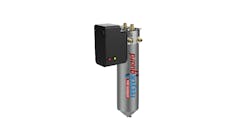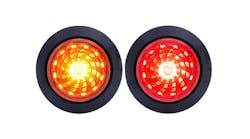If your fleet operates in an urban or semi-urban area, hybrid cars are a no regrets option. Hybrids are not only better for the environment, they are better for the bottom line of a fleet.
This is no longer a topic of debate. This is a statement based on over a decade of good operating data.
Our organization, CALSTART - a non-profit organization focused on energy security, clean air and economic development by spurring the growth of clean transportation technology - works with all of the different clean fuels and technologies across the nation. We particularly believe fleets play a critical role in helping to expand the market for clean, low carbon vehicles. We also know that fleets need help to place the right technology and fuel in the right application to achieve this success.
It is important to be accurate and to not over-sell any fuel or technology. To this end, CALSTART can provide fleets with help to find those “right” fits and roll out deployment plans that work. Some of this help can come from tools to assess cost of ownership, such as our E-Truck Business Case Calculator that illustrates the operational savings and real costs associated with this technology. More such tools are coming.
CALSTART also shares project field data that fleet members can tap to understand the effectiveness of different technologies.
CALSTART is hosting a four-session fleet sustainability track at the NAFA Fleet Management Association I&E Conference in Atlantic City, NJ, April 24 to 26, to outline many of those issues.
Finally, CALSTART can provide custom assistance to individual fleets to help them structure a clean vehicle deployment plan that really works for them.
EXPANDED PRODUCT OFFERINGS
Since the first sales 13 years ago, the quality of hybrid technology has improved, and the number of product offerings has also grown. Among all cars, the Toyota Prius is an outstanding commercial and environmental success story. Worldwide, the Prius is now the fifth best-selling car in the world.
This is not only a positive statement for Toyota, but really a promising signal for the entire segment.
Nationally, in 2012, approximately 425,000 hybrid cars were sold in the United States. That represented about three percent of total light duty vehicles sales in the U.S.
SIGNIFICANT GROWTH
Expect that number to grow significantly over the next decade for four main reasons. First, consumers and fleet managers are becoming more familiar with and developing positive attitudes toward hybrid vehicles. Second, the car companies are going to be working hard to meet the 2025 federal fuel economy standard of 54.5 miles per gallon and hybrid technology will be one of their leading strategies.
It would not surprise me if all new cars sold in the U.S. by 2020 used stop/start technology and would therefore be considered “mild hybrids.”
The third factor is an outgrowth of the first. We will be seeing more hybrid options in more vehicle classes and styles, and there will simply be more and more choices and options for consumers and fleets.
The Ford C-Max Hybrid and the two new members of the Prius family - the C and V models - are good examples of this trend.
The fourth reason why the hybrid sector will grow significantly, and one that should be particularly relevant for fleets, is the very favorable economics of hybrid technology.
OPERATING COSTS
For the most part, the purchase price of a hybrid is more expensive than its conventional gasoline counterpart. However, with the data we have now on operating costs, it is clear that with gasoline at $3.50/gallon, a hybrid vehicle offers better value, particularly for fleets operating in urban and/or suburban areas.
On fuel savings alone, if driven more than 50,000 miles, there is usually a three-year payback on hybrid cars. However, we now know there are other significant economic benefits of hybrid passenger cars.
Sonoma County, CA, should be known for not only its world class wines, but also for the world class management of the county government’s fleet. Under the leadership of Dave Head, fleet manager, and Dave Worthington, assistant fleet manager, Sonoma County has been using hybrid cars for over a decade and have found that its total operating costs of hybrids is, on average, about half of the total operating cost of a conventional gasoline counterpart. The two are convinced that choosing a hybrid car over a conventional one is a no brainer.
In addition to very significant savings resulting from lower fuel costs and fewer oil changes, Sonoma County also reports that it has not yet needed to perform a brake replacement job on one of its hybrids.
Sonoma County typically sells its cars after 75,000 to 80,000 miles because at that point in a car’s life, maintenance costs often increase significantly. For most conventional cars, at that point in its life, one or two brake replacements would have been necessary. This is probably a savings of $1,000, or close to 25 percent of the incremental cost of a hybrid.
RESALE VALUE
The Sonoma County team is also finding that their hybrid cars have a significantly higher resale value than their gasoline counterparts. The following is a direct quote from the Kelly Blue Book (a vehicle valuation and information source) website that is representative of what we are seeing about the entire class: “As for resale, the Camry Hybrid is expected to retain an excellent five-year residual value, better than any of its gasoline powered brothers.”
In fact, the entire incremental purchase cost of a hybrid is often completely captured at the time of resale. In other words, the extra amount per car that a fleet initially pays for a hybrid over its gasoline equivalent can be almost entirely offset by the higher resale value of the hybrid.
When hybrids were originally offered for sale at the beginning of this century, there was some concern about their resale value because the technology was new and there was little life cycle history on battery packs. After 13 years of operations, we now know that the hybrid battery packs are robust and often last as long as the car itself.
This knowledge is a large contributor to the impressive resale values of hybrids.
DRIVER TRAINING
Some fleets, unfortunately, are showing they can be pretty good at reducing the amount of cost savings from a hybrid. In particular, I want to single out some cities where hybrid taxis are mandated. The drivers seem to be either untrained or completely unmotivated to take advantage of the fuel saving capability of a hybrid.
Good driver training programs do make an enormous difference and can help fleets utilize the full potential of a hybrid technology. Some fleets have reported improvements of 30 percent as a result of good training programs.
I see this in my own family fleet, where the fuel economy of the car when driven by the 50 something father is at least 30 percent better than when driven by the lead footed teenage son.
ELECTRIC VEHICLES
The potential to do even more with hybrids has expanded in the last three years with the inclusion of extended range electric vehicles and plug-in hybrid electric vehicles (PHEV). The table, PHEV/EV U.S. Market, shows a strong upward trend in sales of plug-in hybrids and battery electric vehicles (EV). The primary vehicles causing this positive growth trend are the Chevy Volt and the Toyota Plug-in Prius.
With plug-in hybrids, fleets can further reduce their exposure to the volatile world oil market by powering their vehicles from the electricity grid. The price for electricity is far more stable and easier to predict and build a business case around than oil.
In addition, though the carbon intensity of the grid varies throughout the country, it is almost always better for the environment to power a car by the grid than by oil.
Plug-in hybrids create an opportunity for fleets to go a step further to manage their transportation energy and control their own fates. Through an on-site distributed source of energy - be it from a fuel cell, a natural gas turbine, a windmill or solar panels - fleet consumers can achieve more energy independence.
At CALSTART’s headquarters in Pasadena, CA, we installed an 84 kw solar system in June of 2012. This leased system did not require any upfront investment and should pay for itself within 10 years.
After the 10-year period, we will be able to purchase the system, and for years 11 to 20, be largely operating on free, renewable electricity. We will be using that energy to power our building, our own fleet vehicles and our employee’s plug-in cars.
If the natural gas market continues to expand, and prices remain low, we expect to see natural gas hybrid cars enter the market. There is already considerable interest in hybridizing the many natural gas transit buses that are in use today.
WORLD OIL MARKET
Looking ahead, the future of the world oil market seems pretty uncertain. It’s possible nothing major on the geopolitical front will happen, and we’ll be looking at a future of relative calm and price stability. The oil industry has developed new technology and is now fracking for oil in new and ingenious ways.
Then again, things could go south and we could see continued volatility and price spikes. To deal with this uncertainty, many of the leading fleet managers are taking steps to increase efficiency, reduce oil consumption and incorporate substitutes.
In summary, we are moving into an unprecedented era where fleet managers will have options to significantly reduce their dependence on oil, improve their bottom line and do what is good for the environment.
In addition to the hybrid cars, there are a growing number of natural gas, all electric and even fuel cell vehicles that will soon be available to fleets. There is good product out there now that can help fleets achieve these goals today. There will be even more choices in the future.



